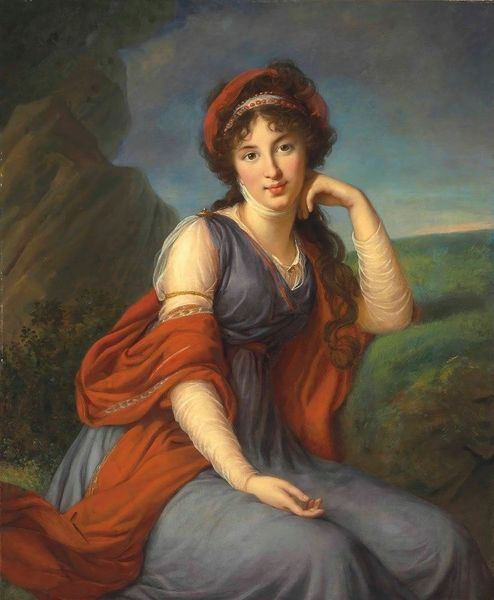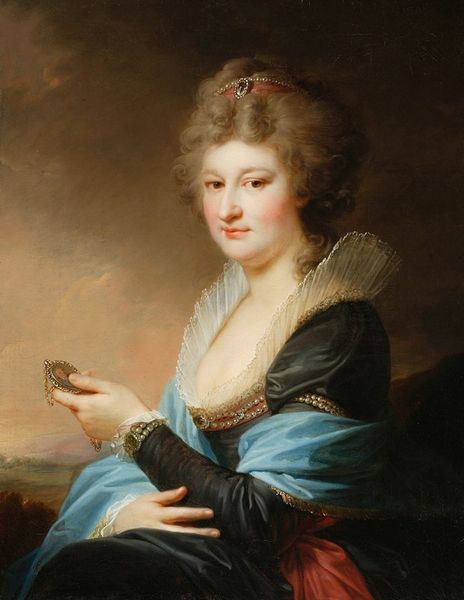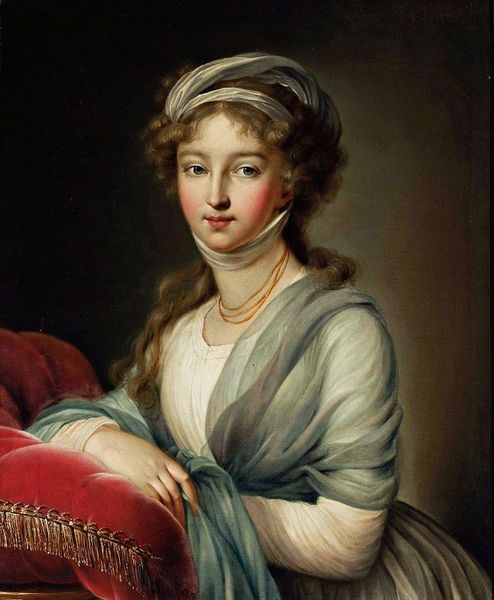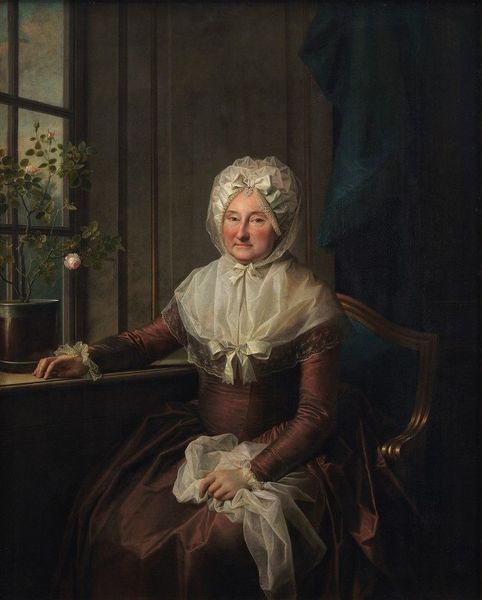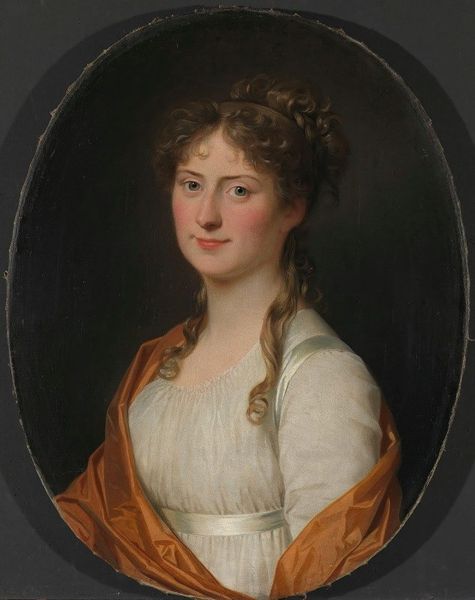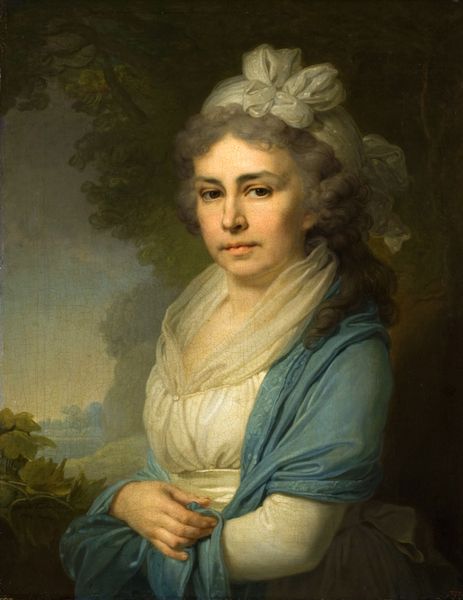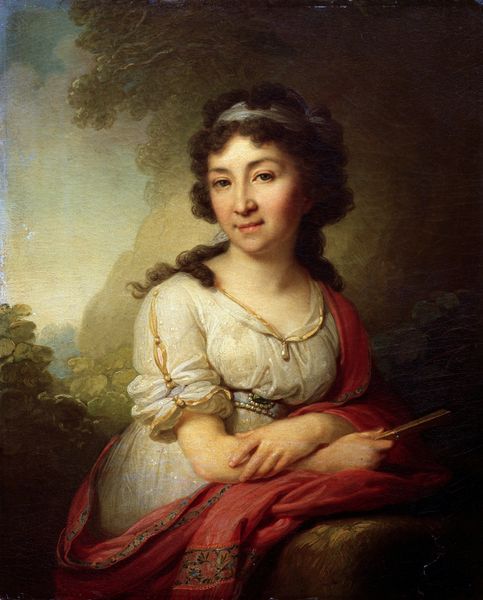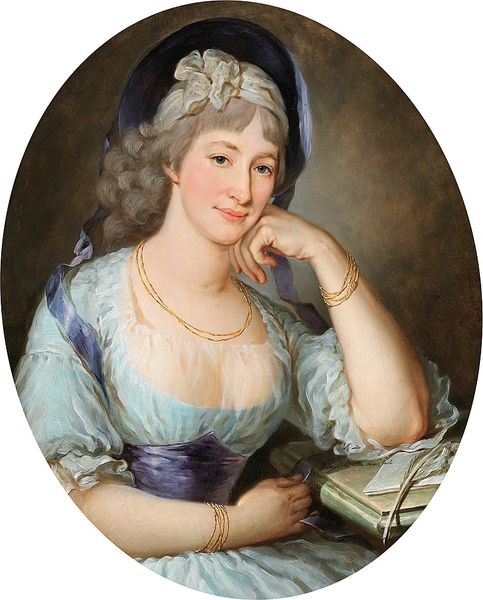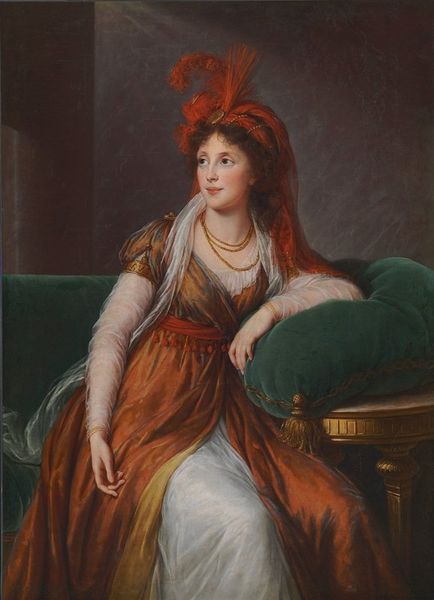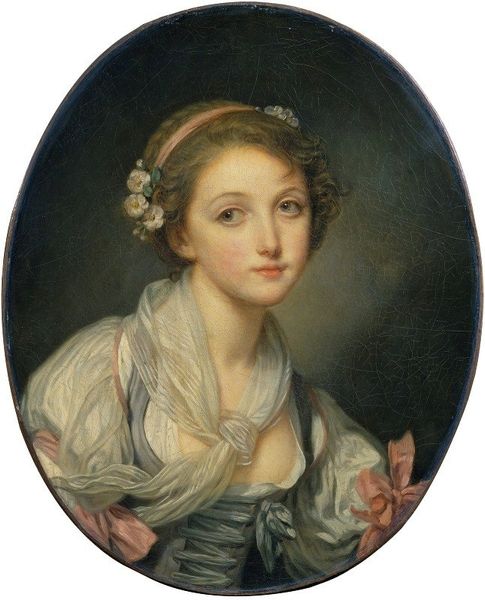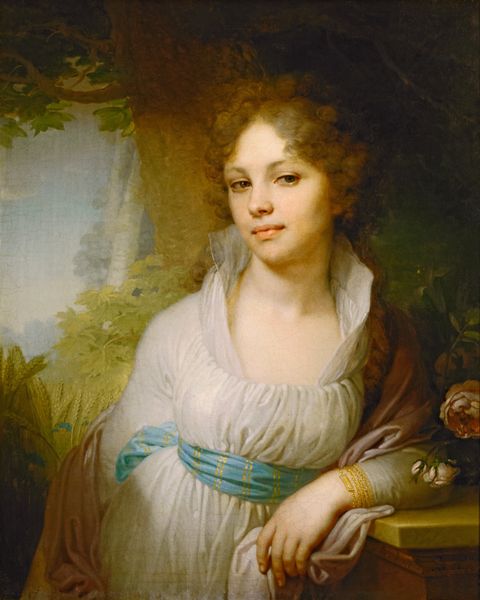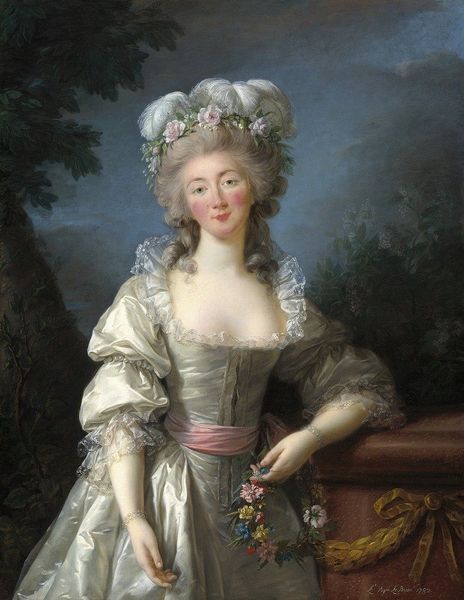
Copyright: Public Domain: Artvee
Editor: This is Elisabeth Louise Vigée Le Brun’s "Portrait of Countess Maria Theresia Bucquoi, née Parr," painted in 1793. It's struck me as rather pensive, this woman in a pastoral scene, but what catches your eye in this piece? Curator: Well, let's consider the waterfall behind her. Water, as a symbol, has incredible depth. On one hand, it signifies purification and cleansing, but the ceaseless flow also evokes the passage of time and the ever-changing nature of life. Editor: So the waterfall speaks to something beyond just a pretty backdrop? Curator: Precisely. Notice how Countess Bucquoi is posed. Her thoughtful gaze and the hand supporting her chin, combined with the relatively simple dress for the era, move toward something more naturalistic. It suggests a yearning for simpler times, away from courtly life, a theme echoed throughout Rococo painting in the years before the French revolution, perhaps mirroring her internal landscape, which is very complex if we consider historical context. What about the color? Do you see anything peculiar in its contrast? Editor: Yes, the fiery red shawl really pops against the muted dress and the pale background. Curator: Absolutely, this symbolic use of colour, so vibrant, indicates more than just what she wears: fire, ardor, even a quiet rebellion maybe? Le Brun was herself deeply entrenched in aristocratic circles, and this painting tells an individual story within a societal drama. Editor: That’s a lot to unpack in one portrait! It's fascinating how the combination of symbols tells a layered story. Curator: Indeed, and that’s just scratching the surface. Each viewing will probably open up new perspectives on the individual and on history.
Comments
No comments
Be the first to comment and join the conversation on the ultimate creative platform.
